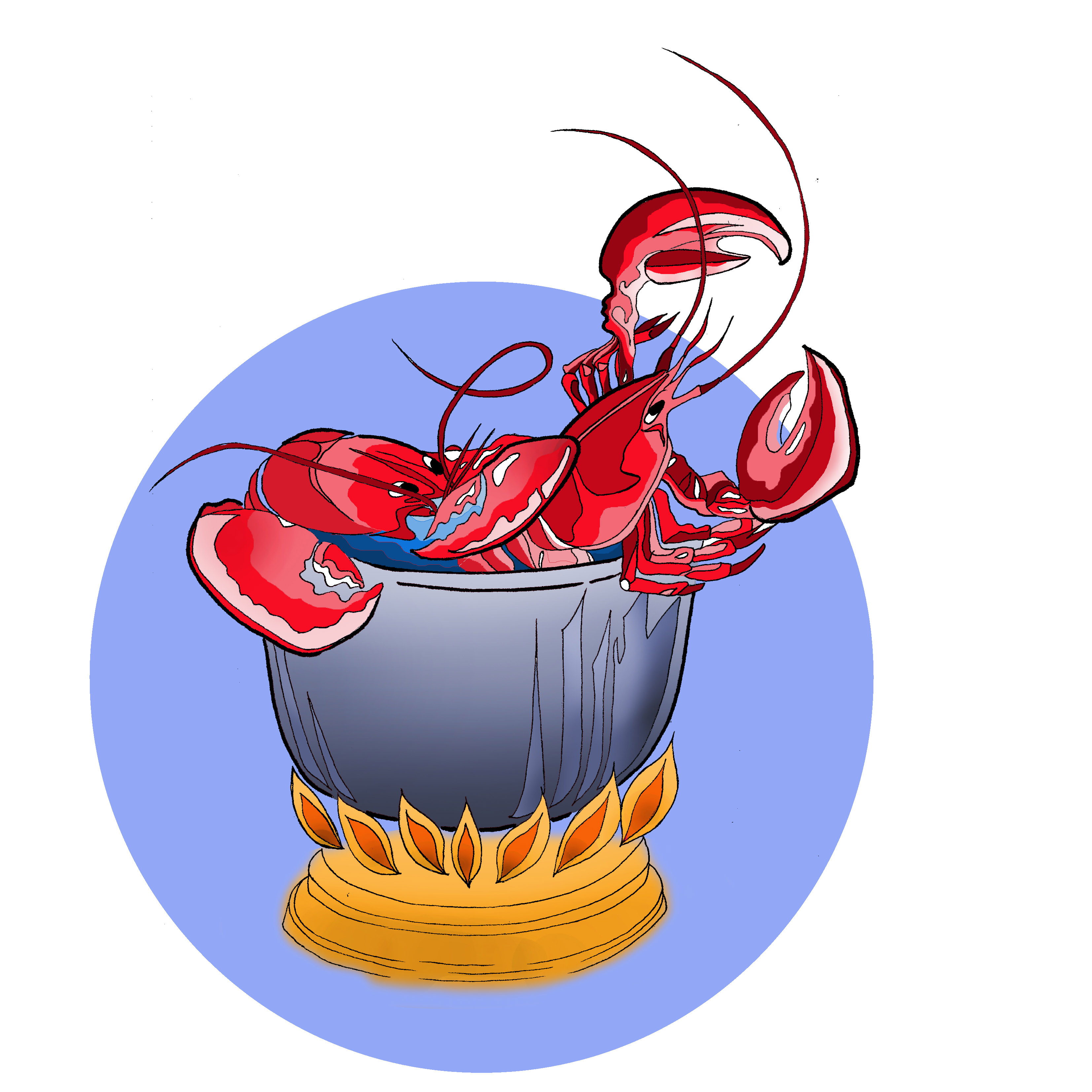Research presented at the International Ethological Conference, known as Behaviour 2013, in Newcastle, U.K. earlier this August has shown there may be more to crustacean nervous systems than previously known. Robert Elwood, a researcher from Queen’s University Belfast, announced at the conference that there is evidence that crustaceans, such as lobsters and crabs, experience the sensation of pain. This finding is contrary to previously held beliefs that crustaceans feel no pain and raises questions surrounding the treatment of these animals as a delicacy.
The basis behind this idea was brought to light in several “shock avoidance” studies. In one study, shore crabs were placed in a glass tank with the option of choosing from two different shelters. Through randomization, the shelter it first selected would either act as the “shock shelter,” where an electric shock was administered to the crab when it entered that particular shelter, or a “non-shock shelter,” where no shock was administered. At the start of each trial, the crab was placed in the centre of the container and given the option to enter the shock or non-shock shelter. This was repeated 10 times.
The research article splits the concept of pain into two components: nociception and the negative affective state. Nociception, an unconscious response to an unpleasant stimulus, allows animals to react immediately and provides protection from possible dangers. In comparing just nociception alone with the feeling of pain, the study states: “pain facilitates long-term protection because of the ease with which animals learn to avoid that situation and avoid future damage.” In other words, the capacity to experience pain proves to be adaptive for such crustaceans, as it is with most higher level sentient animals.
The outcomes of the study showed that the crabs were able to distinguish between the two shelters provided and ultimately decide to use the non-shock shelter. This meant that the crab had to change a previously preferred direction of travel to keep away from the shock shelter and underwent “swift avoidance learning,” a key indicator of pain-evasion behaviour.
In a related experiment by Elwood, hermit crabs were presented two shell options, one being a common shell that most hermit crabs prefer. A shock was administered when the crab entered the shell, which led the crab to make a swift exit when another shell became available. Similar to the other study, the crab’s shocking experience altered its future behaviour and gave it an apparent motivation to move to the new shell.
Crustaceans are a subphylum of arthropods with a hard, chitinous exoskeleton. Most crustaceans are free-ranging marine animals. They are invertebrates, and their lack of a spine leads to differences in cognitive ability and nervous system complexity compared to vertebrates.
The outcomes of the studies were not only consistent with the criteria for pain experience, but the pain experience that is observed in animals such as humans.
The research presented by Elwood challenges past findings that invertebrates do not feel pain. A 2005 study from the Norwegian Scientific Committee for Food Safety cites the difference in central nervous systems and cognitive abilities between invertebrates and vertebrates as evidence that crustaceans have varying levels of complexity associated with their function. With this in mind, the Norwegian study states that “it is uncertain if these animals can feel pain consistent with the concept of pain we know from humans” and that invertebrates may simply react to detrimental stimuli through nociception, an unconscious response to a potential threat.
Elwood’s research casts doubt on the idea that noiciception is the only factor behind the crustacean’s actions. As he puts it, there is a “long term-motivational change [in these experiments] that is entirely consistent with the idea of pain.”
The recent findings present new ethical questions regarding the treatment of crustaceans and how they are slaughtered for consumption – lobsters and crabs are generally boiled alive. While mammals and other vertebrates have standards in place for protection from harm in various fields of scientific research, crustaceans specifically, and invertebrates generally, do not. With these new findings, regulations for more humane treatment may need to be considered.


